The Happy Delivery of Women
| Title | De l’heureux accouchement des femmes: ou il est traicte du gouvernement de leur grossesse, de leur travail naturel et contre nature, du traictement es tant accouchees, et de leurs maladies |
|---|---|
| Title (translated) | Child-birth or, The happy deliuerie of vvomen VVherein is set downe the gouernment of women. In the time of their breeding childe |
| Contributor(s) |
Guillemeau, Jacques (author) Unknown translator |
| Year | 1609, 1621, 1635 |
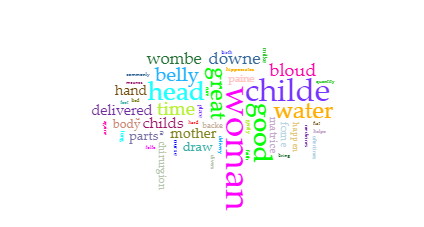
This is a visualisation taken from Voyant Tools which shows the most common words and concerns of this text and how it pertains to the female body. We can see the use of two words for the womb (‘wombe’ and ‘matrice’). Guillemeau also uses a lot of other body words.
Background to the text
Written by Jacques Guillemeau (1550-1613) in 1609 just before his death, De l’heureux accouchement des femmes: ou il est traicte du gouvernement de leur grossesse, de leur travail naturel et contre nature, du traictement es tant accouchees, et de leurs maladies is our second 17th century source. This text underwent a few changes in its time: it was first translated into English by an anonymous translator in 1612 who combined this text and Guillemeau’s other 1609 text, De la nourriture et gouvernement des enfants, into one compiled English form.
This work took the lengthy title Child-birth or, The happy deliuerie of vvomen VVherein is set downe the gouernment of women. In the time of their breeding childe: of their trauaile, both naturall, and contrary to nature: and of their lying in. Together with the diseases, which happen to women in those times, and the meanes to helpe them. To which is added, a treatise of the diseases of infants, and young children: with the cure of them; the second is its reprint in 1621 by Guillemeau’s son who edited the work to add his own findings, as well as adding Guillemeau’s treatise on child care, and renamed it De la grossesse et accouchement des femmes ; du gouvernement de celles-ci et moyen de survenir aux accidents qui leur arrivent, ensemble de la nourriture des enfans. As we consulted the English translation we will refer to it by its simpler name, The Happy Delivery.
Content of the Work
Guillemeau was not a gynaecologist by trade, but a surgeon. He trained under Ambroise Paré, who later became his father-in-law, and served as the surgeon for three kings of France, the last being Henry IV. In the English translation of The Happy Delivery he is identified as the ‘French King’s Chirguon.
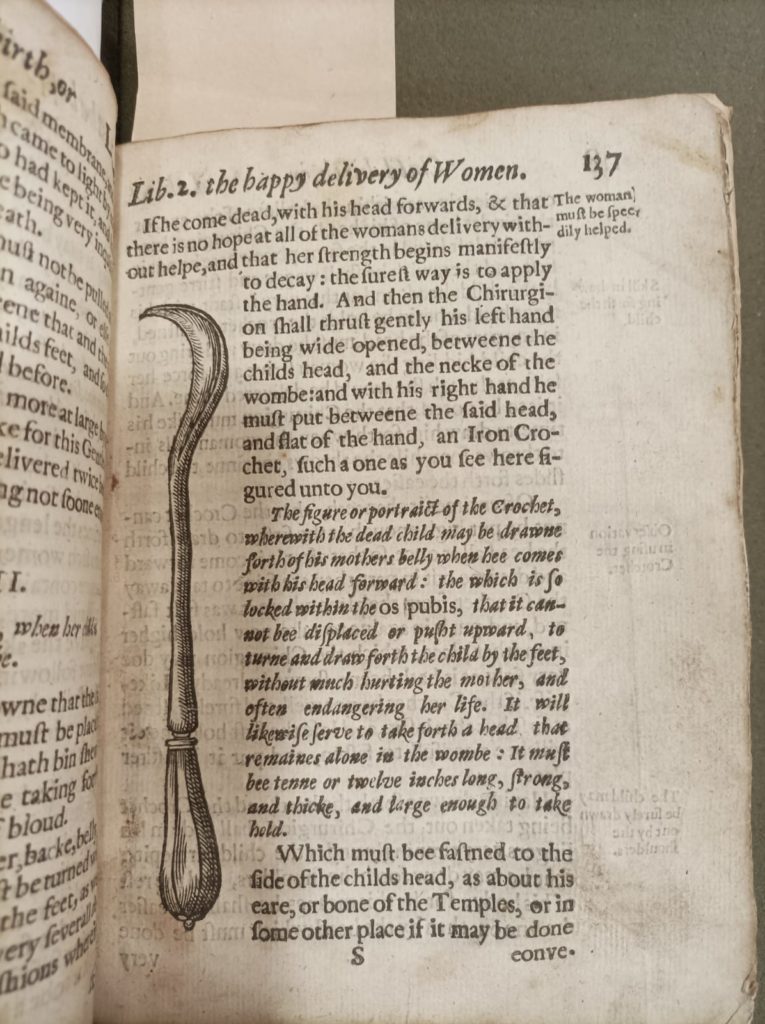

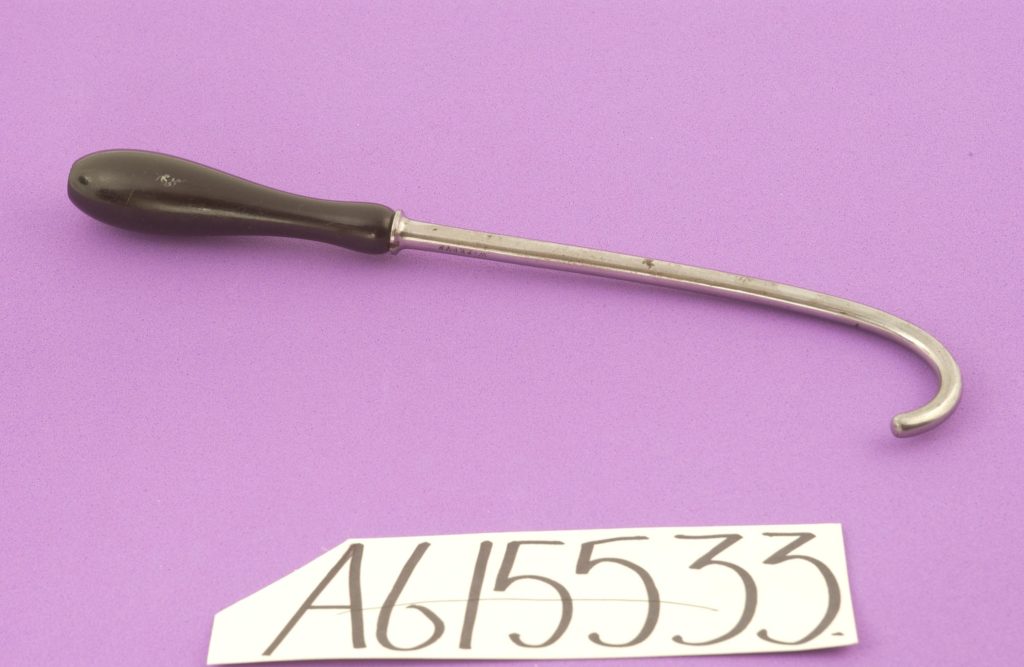
The pregnant female body is to the fore in this text, and there are numerous engravings depicting the child in the womb. The womb is understood to be a cocooning space where the growing child is attached via some kind of chord, but the overall structure leaves out much of the intricate detail modern medicine benefits from today.
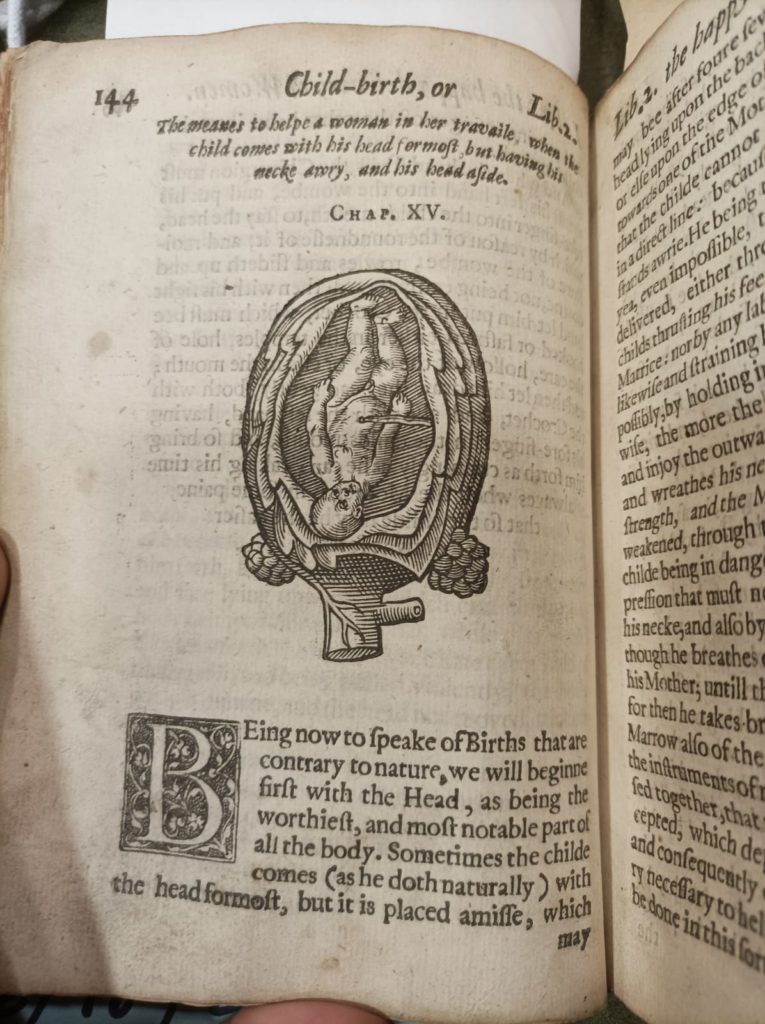
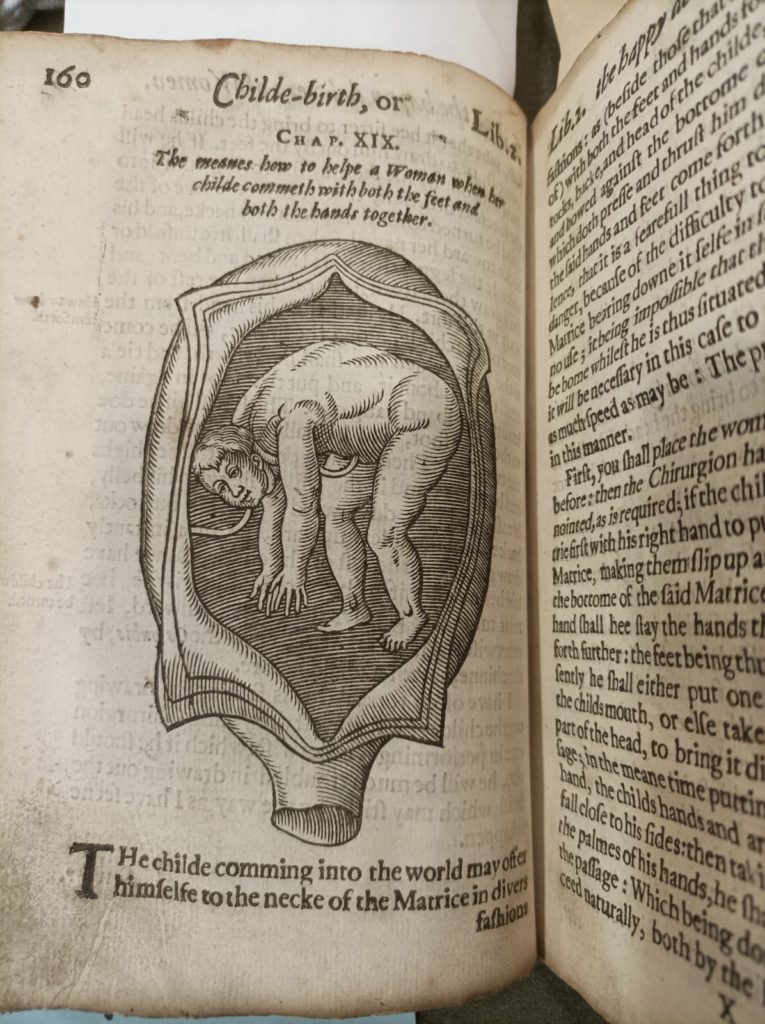
Consult the 1635 Source
We consulted three versions of this source: the earliest is the transcribed original 1612 English translation provided by the University of Michigan, also serving as our .txt file source; the printed book we consulted was the digitised 1635 English edition hosted by Google Books, which is viewable above, and the source of that same digitised text which we consulted in person at the University of San Francisco California Library.



